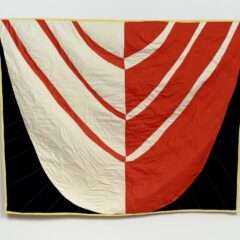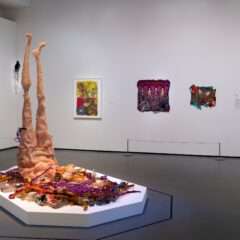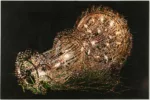Stitched paintings by three women are in the show Spontaneous Repetition at StrataSphere Gallery, and all three artists take remarkably different approaches to stage a quiet rebellion against the traditions of painting.
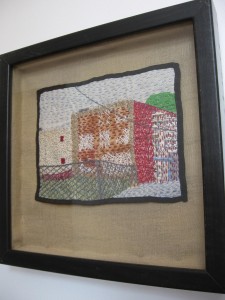
Marie Elcin paints Philadelphia with stitches, creating portraits of decrepit street corners and swatches of nature that flourish next to industrial wastelands and rubble. Her stitches capture the jittery patterning of fences and bricks and gravel.
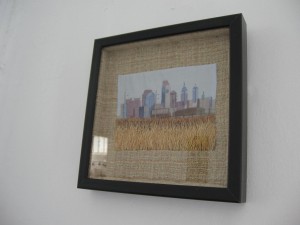 The sewing captures the swaying grasses of swampy riversides. In one she paints a watery Philly skyline dissolving behind her lush, tall grasses in thread. The thread is a tactile, repetitive presence that reminds me of a Warren Rohrer painting.
The sewing captures the swaying grasses of swampy riversides. In one she paints a watery Philly skyline dissolving behind her lush, tall grasses in thread. The thread is a tactile, repetitive presence that reminds me of a Warren Rohrer painting.
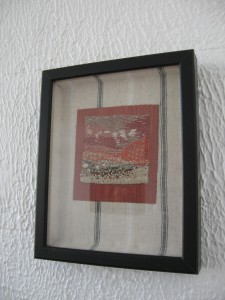
Some of her backings are highly unlikely–wide, a-symmetrically placed stripes, nubbly rich greens that bring to mind some awful curtains from my past. The backings are stitched to the back and folded toward the glass to create a shadow box. This too seems unlikely — contrarian and maybe too crafty. But the small, intense stitching delivers passion at a modest scale; they are antidotes to Peter Doig.
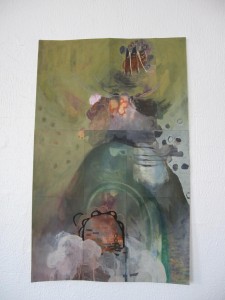
Also in the show are semi-abstract monoprints painted and stitched by Erin E. Castellan. The paper is folded and hung unframed. The colors of the paint are just this side of muddy; the shapes are barely suggested. Together, they create a hazy atmosphere that only reveals beauty through hard looking and light.
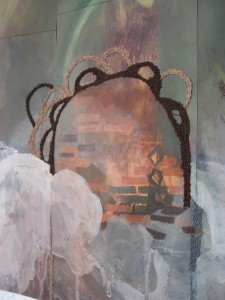
I wondered about the brick shapes that appear over and over. Castellan emailed that she thought of them as stitches. She wrote:
I think the bricks act similarly to the individual stitched knots, in that their accumulation can be measured. They speak of presence. They are. They exist. The deliberate nature of the brick contrasts with the more transitory, accidental marks found within the initial monoprinted layer.
The bricks too must be viewed through the haze. The actual stitches, however, are not in the least hazy. They hold the atmosphere and the paintings in place with their almost manic density, giving bones to the paintings’ dreamy architecture of dells, castles and rainbows as if the mind is imposing its ideas on a fragile, ephemeral world.
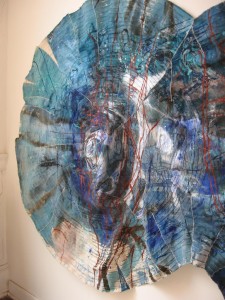
We just featured the third artist, Colleen McCubbin Stepanic, in a studio visit interview with artblog contributor Montana Torrey, so I won’t say much, other than to say the manic method–tearing painted canvas into strips and stitching it and sometimes painting it some more and then cutting it again–is noteworthy for its iconoclastic approach to the canvas and the flat wall. Her machine stitching is brutal and has taken a toll on her machine. She allows the rough finish of untrimmed threads to hang. And it’s hard to believe that such a pleasant person can bring such steely determination and anger–and a sense of wonder–to her work.
Iconoclasm is inherent in a show of “paintings” made with needles and thread. Although uneven, this show of 19 works including a couple of watercolor studies, also offers rewards, capturing a sense of wonder at the world at the same time that it challenges the traditions of paintings on walls, what they can be made of, and who can make them and how.
The show will be up to May 1 and is open Saturdays and Sundays, 1 to 5 p.m. or by appointment.


